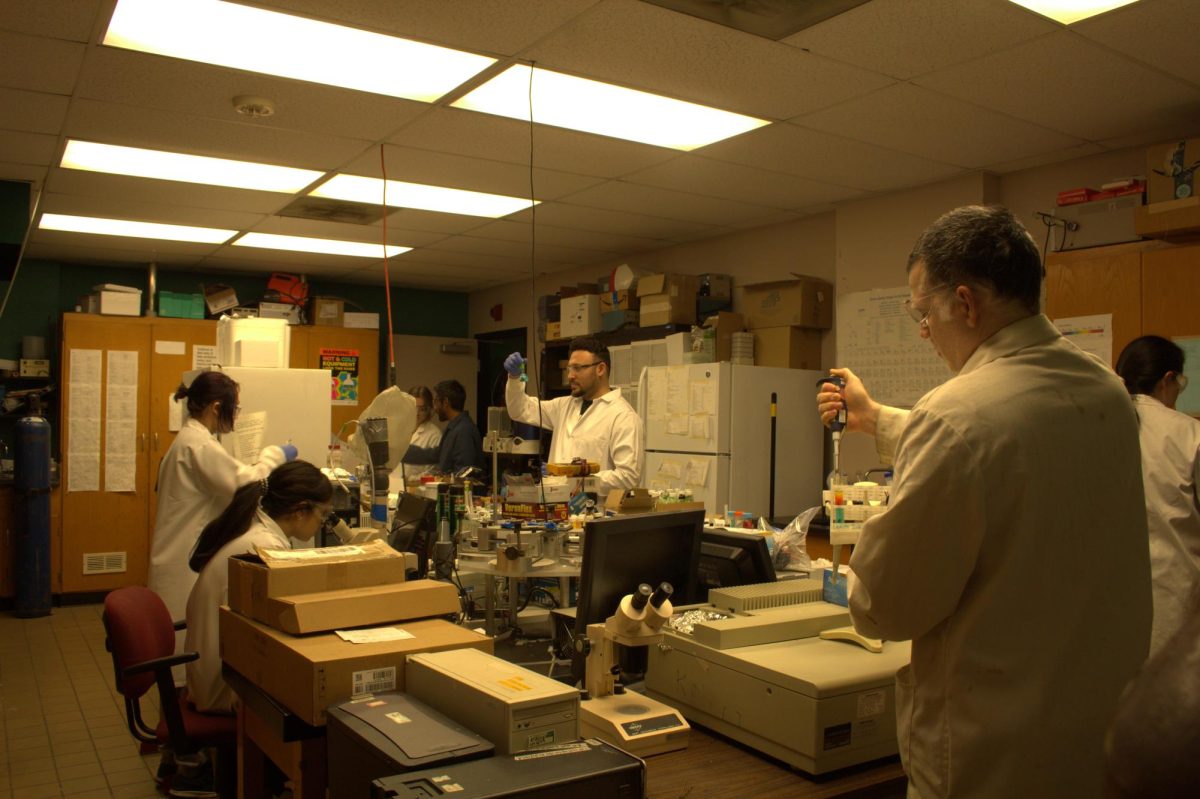Wind turbine project shelved, not cancelled
April 24, 2012
The chair of the SIU Sustainability Council says he wants to squash negative rumors about the university’s wind turbine project.
Jonathan Gray, associate professor of speech communication and founding member of the Sustainability Council, said since the project has been shelved indefinitely, he’s heard that many students think the funding meant for the turbine has been absorbed into the university’s budget.
He said this is not true.
Advertisement
The proposal for the turbine came out of Plant and Service Operations rather than the Sustainability Council. It was estimated to cost about $7 million, said Justin Harrell, an engineer in Plant and Service Operations and member of the Sustainability Council.
Harrell worked closely with Phil Gatton, director of Plant and Service Operations, on the project.
Gray said the council was willing to help with the funding for the turbine.
The Green Fund, which is a subcommittee of the Sustainability Council and made up of three students, one faculty and one staff member, realized it didn’t have enough money in its budget to donate the $1 million requested for the project, he said, but the members still wanted to help.
“The Green Fund recognized this as probably one of the biggest and most ambitious of the sustainability projects,” Gray said.
The group decided to give half of its budget to the project per semester, which is gained through student fees. Harrell said the funding would be over a span of five years and would total about $750,000.
The project looked promising, Gatton said.
Advertisement*
Wind turbines are mostly found in the northern part of the state near farmland, he said, but SIUC’s farmland and its electric distribution system made it possible for the project.
“We wanted to try to prove that wind turbine technology can work anywhere,” he said. “We’re at a very moderate wind zone and the thought was if we can put a wind turbine on campus and pay for itself … it would get others excited about it and see the benefit of putting them everywhere.”
Harrell said one issue they ran into was when they found Indiana Bats in the area — an endangered species.
This would have turned into a positive, however, because it could have initiated research opportunities on campus, Gatton said. Usually when turbines are built on big farmlands, he said, there aren’t any comprehensive studies about what it does to the animal population in the area. Gatton said the plan was to put a research team in the area to track how many deaths occurred over a year, which would most likely be minimal. He said when bats fly as high as the turbine, they could accidentally fly into the blades of the structure.
“We were more interested in the research component of that and to provide real data to the developers and the federal government, so we had a lot of great ideas,” he said.
Harrell said they did a lot of research on the bats such as recording their ultrasonic sounds and capturing a few so they could be identified and tagged. He said he was even as close as getting permits from both the Illinois Department of National Resources and the Fish and Wildlife Service to build in the area.
Gray said the project would also be cost efficient for the university, because it would produce its own energy rather than having to buy it.
Gatton said he didn’t expect it to bring in a lot of money but rather break even.
The turbine was expected to have a 30-year life span and it would have paid for itself between year 12 and 15, Gray said.
Then the financial issues happened.
“The problem is we went through all the hurdles we thought we needed to go through — the FAA approvals, the environmental impacts,” Gatton said. “The economic side is what fell apart at the end.”
He said electricity prices on the commercial basis dropped by about 25 percent a year and half ago, making it much cheaper to skip the turbine.
Gray said Chancellor Rita Cheng called for a meeting in October to say she didn’t think the project was a wise investment at the time, and it would be shelved.
“She was nervous about the outlay of cash and how long it would be before it would start to pay back,” he said.
Cheng said the wind pattern in southern Illinois is not conducive to wind power.
“The amount of energy we would receive compared to the investment we needed to make meant that we weren’t going to get the return that we see in other parts of the country,” Cheng said.
Gray said he doesn’t dispute the chancellor’s decision, and he hopes the project can be taken up again in the future because he thinks it’s important for the campus to have a visible sustainability mission.
In the meantime, Plant and Service Operations has put its focus on other alternative forms of energy such as biomass.
The money from the Green Fund was not absorbed into the university’s budget either, Gray said. It was never taken from the council’s account, he said.
The project also managed to get a $500,000 grant from the Illinois Department of Commerce and Economic Opportunity, but it was given back when the project got shelved, Harrell said.
Both Gatton and Harrell said they think the project could be picked back up in the future when electricity prices are higher and there is more significant grant funding.
“I’m not giving up,” Gatton said. “We put of a lot of time into this thing, and you never know how the economy is going to change.”
Advertisement








